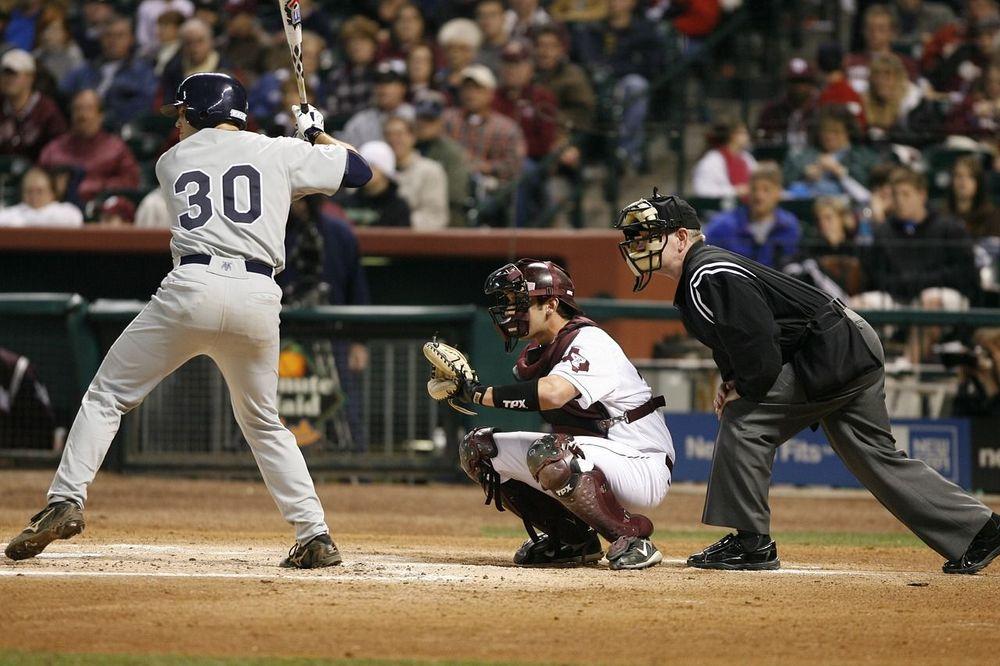
The Top 10 MLB catchers by trade value
According to our model, the top 10 MLB-level catchers by trade value are:
- [baseball-trade-values-player-link player="9344"]
- [baseball-trade-values-player-link player="9433"]
- [baseball-trade-values-player-link player="8552"]
- [baseball-trade-values-player-link player="9203"]
- [baseball-trade-values-player-link player="8241"]
- [baseball-trade-values-player-link player="9649"]
- [baseball-trade-values-player-link player="8609"]
- [baseball-trade-values-player-link player="10202"]
- [baseball-trade-values-player-link player="7916"]
- [baseball-trade-values-player-link player="13856"]
A few observations on this list (as a reminder, our model is based primarily on surplus value, which is the difference between projected field value and salary; that’s why [baseball-trade-values-player-link player="8321"]isn’t on this list -- he’s making too much money):
Offense matters more than defense
You might find this counterintuitive, since catching is famously a defense-first position, and much has been made in recent years of the value of framing in particular. And while there’s still some truth to that, it became painfully obvious, when looking at the evidence from free agency deals, that teams are not paying much for glove-first catchers:
- * [baseball-trade-values-player-link player="8780"], one of the best defensive catchers in baseball, had to settle for only a $2.5M contract in 2019, doing only a little better in 2020 with two years and $7M.
- * [baseball-trade-values-player-link player="8162"], arguably the best framer in the game, can’t get more than $4M per year from the Braves.
- * Meanwhile, Grandal, who is arguably the best hitting catcher in the game, got four years and $73M from the White Sox.
- We’re in an era when offensive catchers are rare specimens, and the glove-first guys are more prevalent, so scarcity matters. Looking ahead a bit, with the potential advent of robo umps calling balls and strikes, the value of framing may disappear completely if and when that happens. Teams may be anticipating that already.
So perhaps it’s no surprise that our list is topped by Gary Sanchez, who brings a thunderous bat but a shaky glove.
J.T. Realmuto is also high on our list despite the fact that he’s in his walk year -- he’s so good at just about all aspects of the game that his surplus value is high even with only one year of service remaining (it should be noted that we’ve factored in the value of a compensatory draft pick an acquiring team would receive if he opted for free agency; this is still in play since the season hasn’t technically started yet).
And right behind him is Mitch Garver, who broke out with 31 home runs in 2019, as part of a record-setting offensive Twins club.
Meanwhile, [baseball-trade-values-player-link player="8419"], who is perhaps the best defensive catcher in baseball, does not make our list, even though he comes with three years of control. As we have seen, there’s just not a lot of demand for guys who hit under the Mendoza line, even if their defense is elite. And we don’t see that changing any time soon.
Young upstarts with multiple years of control
You’ll notice that Will Smith is No. 2 on our list, despite the fact that he only just broke into the majors in 2019. That’s because he had a tremendous debut, racking up a 132 WRC+ and 1.7 fWAR in 54 games, and the Dodgers have a solid track record of developing their offensive players (see: Muncy, Taylor, Turner), such that projection systems are confident he can keep that up. When you spread that over his six years of cheap control, you get a lot of projected surplus.
It’s a similar story with Danny Jansen, Carson Kelly, and Francisco Mejia (who we’re still listing as a catcher, even though there’s some doubt about his ultimate position) -- they all come with at least five years of affordable control and enough evidence that they can be positive contributors at the MLB level.
Solid veterans with just enough years of control
Interestingly, both Christian Vazquez and Roberto Perez were known as glove-first catchers until 2019, yet both broke out at the plate last year (at least, relative to their past: Vazquez with a 102 WRC+, Perez with a 98), which raised their profiles enough to make our Top 10. They’d both be higher if they had more than three years of control.
Finally, the most discussed catcher in trade circles was probably Willson Contreras -- the Cubs were rumored to have been shopping him in the offseason, but apparently couldn’t find a match. He clearly has solid trade value, but perhaps not as much as they were hoping for.
Note: There are multiple catching prospects who would impact this list if we expanded it to include them (Rutschman, Bart, et al), because their upsides are very high. Once they arrive at the MLB level, we will likely see the catching landscape skew more offensively in general, as these guys bring impactful bats, and their arrival will be timed well with the advent of electronic strike zones.
About the Author
Comments
4Interesting article. I know some teams, like the Cleveland Indians, really value defense and how a catcher calls the game and works with their pitchers. Thankfully, Roberto Perez hit enough not to be an offense liability. I do think that many teams undersell the value of a defense catcher.
I remember about a year ago Austin Hedges was valued roughly equal to Noah Syndergaard. The model has developed nicely since.
Thanks for the feedback.



I agree. It was a bit surprising to us a while ago, when we noticed that the defensive catchers were not being valued that highly overall. One would think their influence on that aspect of the game would be more important, but then again, it seems to be a case of too much supply of that skill and not enough demand for it.